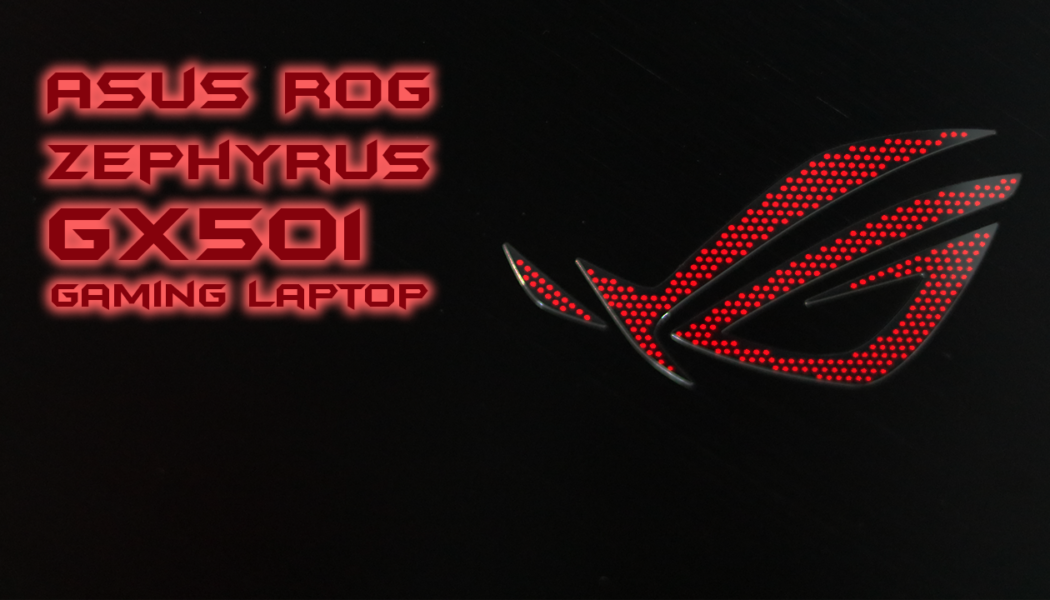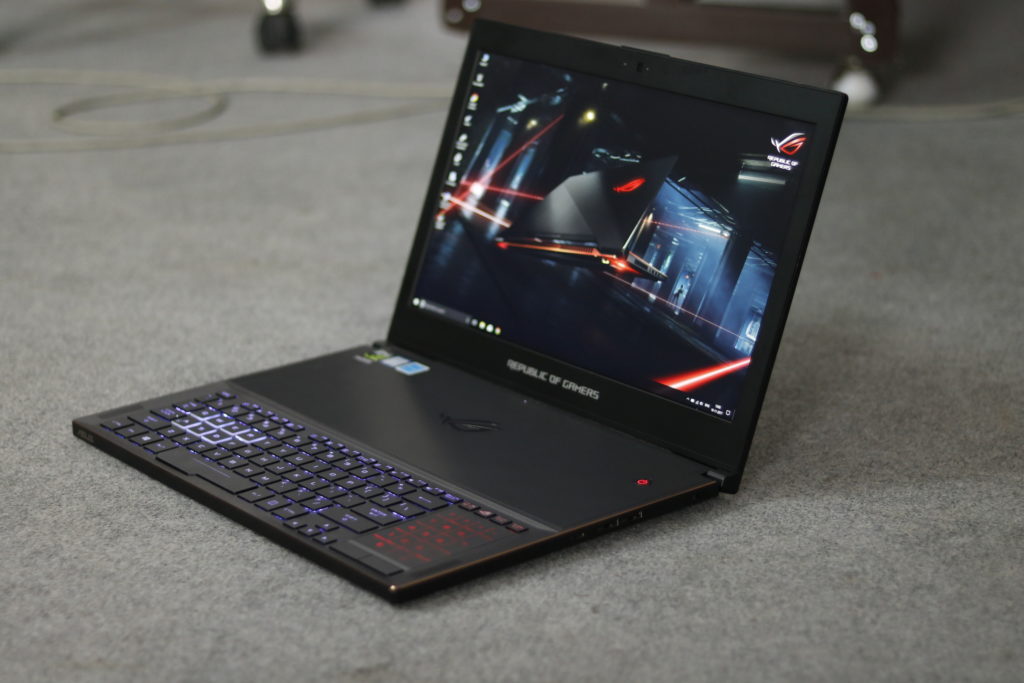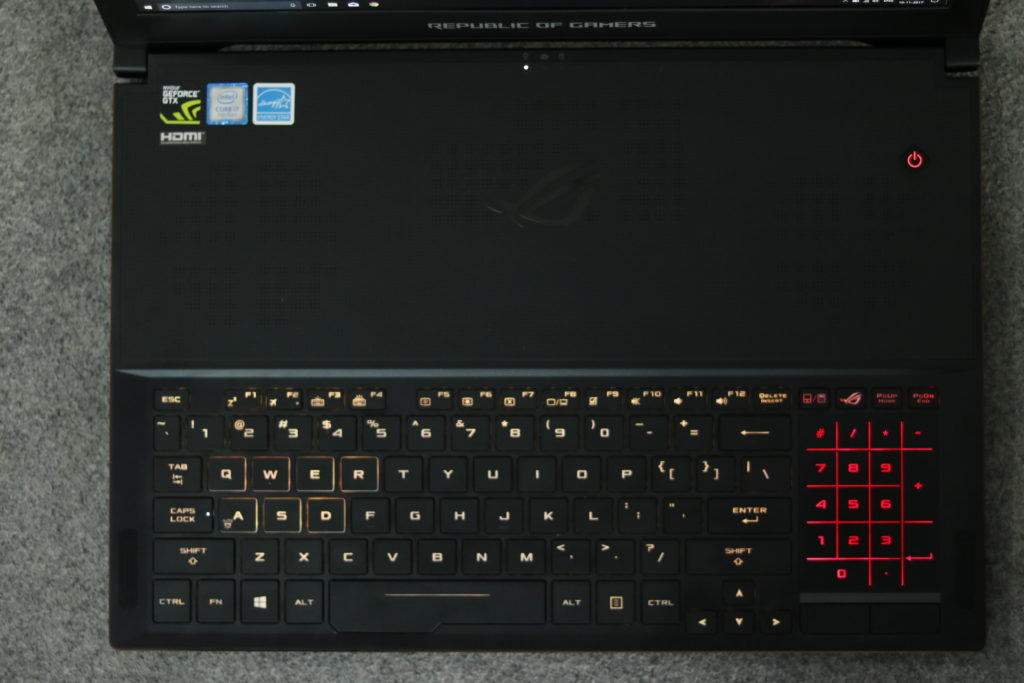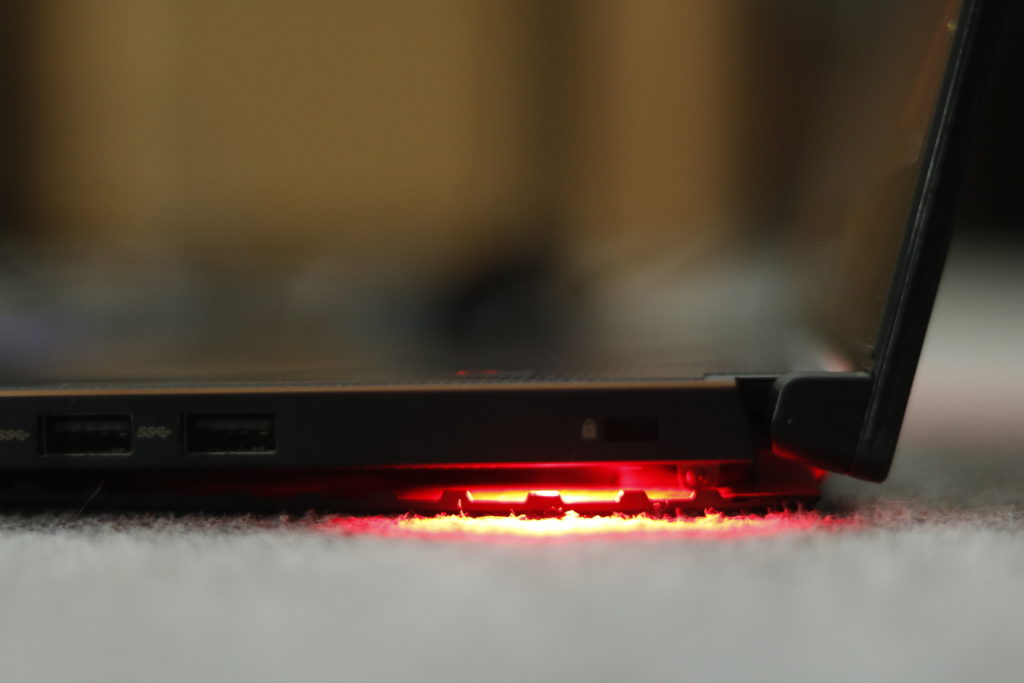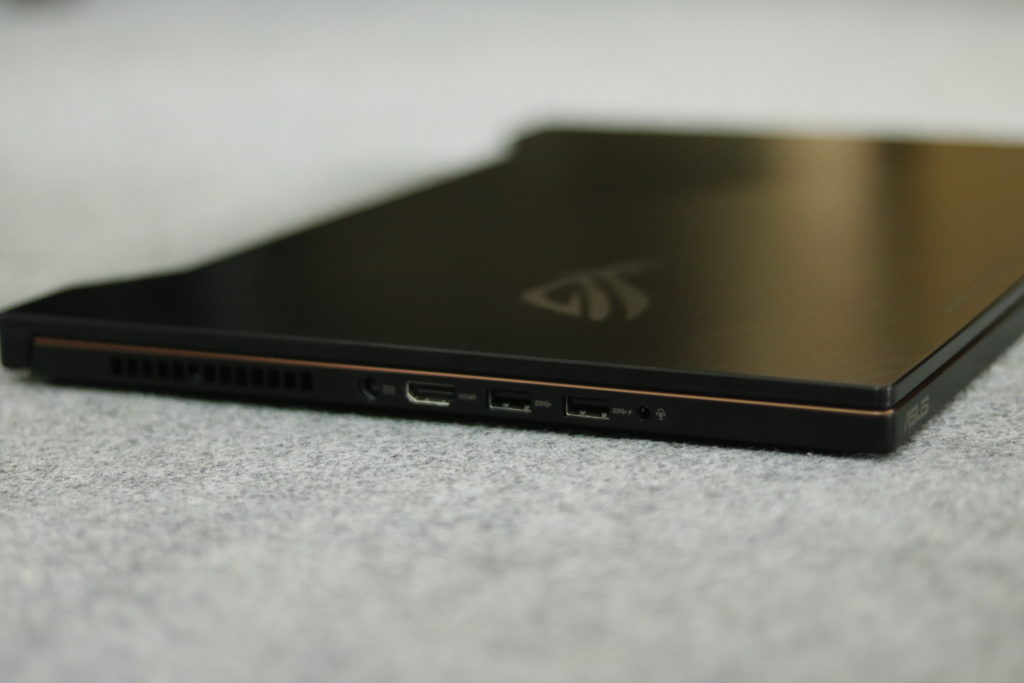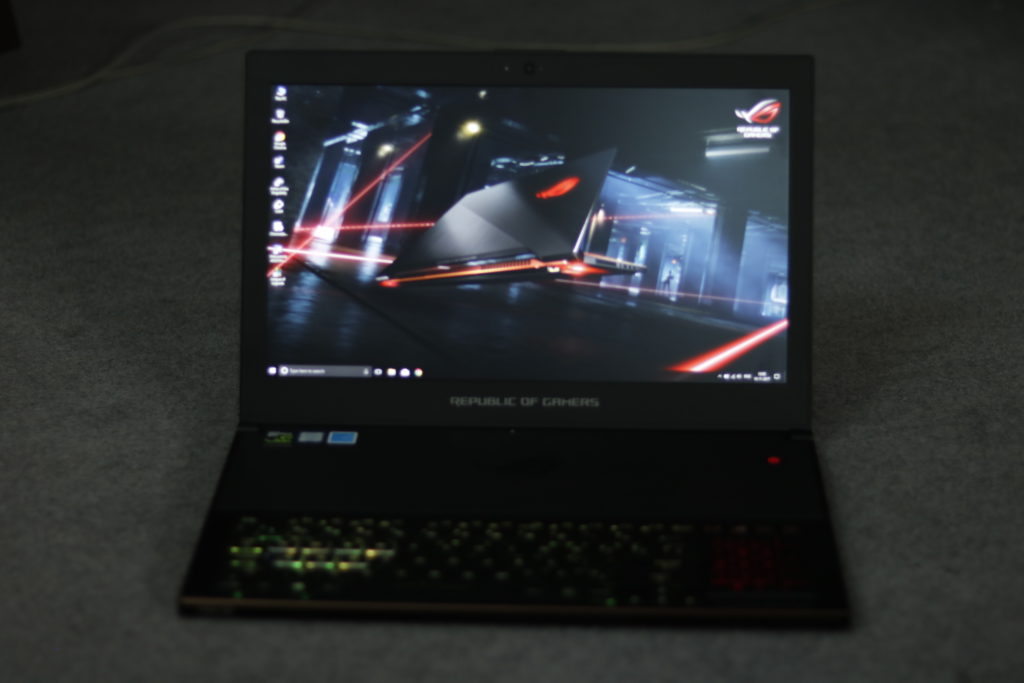The ROG Zephyrus reveal was a big deal for the laptop gaming industry. Fitting a GPU as powerful as the GTX 1080 that weighs barely over 2kg is a revolutionary task, not to mention unprecedented. To achieve this feat, the ROG Zephyrus GX501 uses an innovative design that we haven’t seen in a laptop before. But before we get to that, let’s take a look at the specs
| Processor | Intel Core i7-7700HQ |
| RAM | 24GB DDR 4 |
| Display | 15.6-inch FHD 1080 IPS, 120Hz |
| Graphics Card | GTX 1080 8GB |
| Storage | 1TB SSD |
| Ports | USB 3.0, USB Type-C Thunderbolt, HDMI, 3.5mm audio |
The Zephyrus GX501 packs an Intel Core-i7 7700HQ along with a GTX 1080 under the hood. Now if you think it’s not something new, get this: The laptop is only 0.7 inches thick and weighs 2.2kg. Thanks to NVIDIA’s MaxQ Design, it has become possible to have the most powerful laptop graphics capabilities in the most portable form factor. There are quite a few compromises too, but it’s hard to deny how impressive the notebook is. There’s 24GB of DDR4 RAM along with a staggering 1TB SSD, which is very important as the laptop only has one drive slot so you’ll have to make sure you can get the largest SSD option available. The display is a 15.6-inch FHD IPS 120Hz panel which does justice to the internal specs, providing smooth tear-free experience in all games.
Design
In terms of looks and feel, this is probably the classiest laptop I have ever seen. It has a simple but elegant rectangular body with no flashing red streaks or angular edges. The lid has a rich brushed metal finish with a reflective, backlit ROG logo on one side. The copper finish on the vent adds to that, not drawing to much attention but still giving it a sort of futuristic look. Now, don’t get me wrong, it does have a fair amount of RGB to jazz it up, but none of it is apparent until you actually open the laptop. And once you do, you find that the keyboard has been moved to the lower part in order to make room for the components and the cooling system, similar to the MSI GT83 Titan.
Talking about the cooling system, this is where the Zephyrus design does its magic. In order to keep temps under control, Asus has come up with an innovative design in which the bottom panel opens, creating a 6mm gap to facilitate airflow. It comes into effect automatically as you lift the lid, and watching it happen is a great feeling. This by itself may not feel like much of a solution, but the high-air chamber provides it the cooling the capabilities of bulkier machine. Some people may dismiss all of it as a gimmick, but it works quite well. And for such a slim machine, the GX501 is surprisingly silent, even under heavy loads. The only downside is that the bottom plate feels a little flimsy at times.
In the connectivity department, the Zephyrus is pretty loaded, though you can find some compromises here. The slim form factor means that there’s no space for a LAN port, but apparently the laptop includes a LAN to USB converter in the box. Unfortunately, the review unit did not come with one, so we can’t comment on that. The rest is pretty good, on the left side there’s an HDMI port, two USB 3.0 ports, the charging port and a 3.5mm jack. The right side has two more USB 3.0 ports and one USB Type-C Thunderbolt. There’s no card reader, which I found a little surprising.
The downward shifted keyboard means that the trackpad has been moved to the side. Though there’s no physical numpad, you can switch from the trackpad to the numpad at the press of a button which is quite convenient. The keys are big and well spaced, and this is probably my favourite keyboard on an ROG laptop. That side, it needs to be mentioned that while the keyboard feels good, it doesn’t have good ergonomics. There’s no rest for the wrists, and while an online description showed the laptop does come with a detachable wrist support, the review unit we received did not have one. The trackpad works surprisingly well, though the placement will need a little getting used to, and so will the touch numpad keys.
Performance and Benchmarks
Now, while the MaxQ design ensures that you can use a GTX 1080 in a highly portable device, it does run at lower clock speeds. That’s a max 1290 MHz compared to the conventional 1080’s 1556 MHz. But on the plus side, it uses less power, varying between 90-110W as compared to the 1080’s 150W. Let’s take a look at the numbers, shall we?
The first title we decided to test was Rise of the Tomb Raider. Running the game in Directx 11 at 1080p on Very High preset (AA off, VSync off), we got an impressive average framerate of 101 FPS, while the same settings on Directx 12 ran at an average of 109.2 FPS.
Next up, running the in-game benchmark for Deus Ex: Mankind Divided, the laptop gave about 63.1 average FPS on Directx 11 at 1080p Ultra preset (AA off, VSync off). Ultra settings on Directx 12, however, showed about 63.9 average FPS.
For open world games, we decided to test GTA V. We got an average of about 89 FPS, which again was quite impressive considering the laptop’s size and weight.
We also tested Ashes of the Singularity which showed equally impressive results. Running the game on the Crazy preset, we observed an average framerate of 48.7 FPS on DX11 and 53.4 FPS on DX 12.
What makes the laptop’s performance so impressive is how quietly it does its job. When you’re not playing a game, it’s practically silent. I didn’t experience any problems with overheating either, the cooling system on this device is incredible. The max temperature I observed while gaming was a little over 80C, and it doesn’t cause any discomfort to the user. Of course, at this point you can hear the fans at work, but it’s still not as loud as some of its heavier counterparts.
One major letdown is the laptop’s battery life, which is a maximum of two hours under average use. Even if you’re carrying your laptop around, chances are you’ll have to keep the charger handy. But honestly, it shouldn’t come as a surprise, as the laptop packs a load of power, two of the highest-end components you can expect in a laptop and more, all in a tiny 15-inch frame. It doesn’t exactly leave a lot of room for the battery, especially considering the laptop’s thickness.
The Verdict
The ROG Zephyrus GX501 is marvel to behold, an engineering feat to say the least. It has certainly raised the bar for high portability gaming laptops, and we can expect to see more of these in the near future. It looks incredible, performs amazingly well, and can be carried anywhere without a hassle. There are a lot of compromises under the hood, but that’s the trade off for mobility. The only issue is, it will cause a huge dent in your pocket, one that may be a little hard to justify. But for gamers who live on the go, it doesn’t get any better than this.
Register with us for the best in gaming, and join us for video game discussions on our forums.

